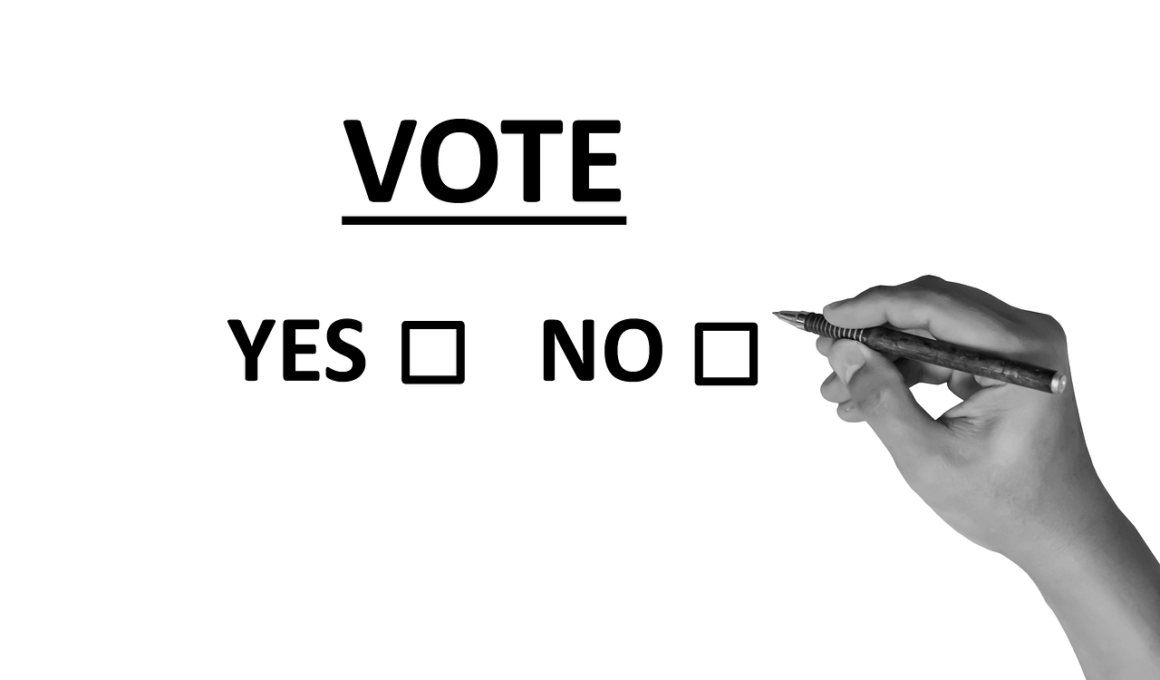The Power of Twitter Polls in Boosting Engagement
Twitter polls have emerged as a prominent tool for creating engagement among users. These interactive features allow users to solicit opinions, preferences, and feedback, thus driving interaction. Given the fast-paced nature of Twitter, polls serve as quick and effective methods for capturing audience attention. When executed correctly, polls can reflect trends, gauge sentiments, or even influence conversations. The resulting data not only informs users about their audience but also fosters a sense of community and participation. Surveys conducted indicate that polls can increase retweets and likes significantly compared to standard tweets. By tapping into users’ inherent desire to voice opinions, polls provide insights that are invaluable for brands and influencers striving to connect meaningfully with their followers. Moreover, using fun and engaging questions can encourage more people to participate. This ultimately leads to increased visibility and reach, expanding a brand’s overall impact on the platform. Overall, Twitter polls are not just a gimmick; they serve as an essential tool for enhancing user engagement, driving strategy, and aligning content with what the audience finds most important and relevant.
Understanding how to create effective Twitter polls is fundamental for maximizing engagement. Users should first consider the audience they are targeting. Knowing their interests helps in crafting questions that resonate with them. Questions should be straightforward and easy to answer, ensuring a higher response rate. Importantly, users should limit options to a manageable number—typically, two to four choices. Too many options can confuse voters and dilute engagement. Additionally, timing can be critical. Launching a poll at peak active hours can yield significant advantages in visibility and interaction. Furthermore, including engaging visuals such as images or GIFs alongside polls can make them more appealing. A visually stimulating post can draw users’ eyes and entice them to participate. Moreover, consider utilizing hashtags to increase the poll’s reach beyond current followers. Hashtags can help attract a wider audience interested in the poll’s topic. By promoting the poll across other social media platforms, users further enhance the likelihood of fostering more engagement. Polls are a versatile tool; when used effectively, they can provide valuable insights and generate greater community involvement.
Benefits of Twitter Polls
There are several benefits associated with using Twitter polls for engagement. Firstly, polls provide immediate feedback, allowing brands to collect relevant data about audience preferences. Secondly, they can significantly increase visibility on the platform, as engaging content tends to be shared more often. Thirdly, polls foster a sense of community among followers. When users participate, they feel more connected to the brand or individual conducting the poll. This connection can result in increased loyalty and stronger relationships. Additionally, interesting polls can often lead to conversations that enhance user engagement further. The comments and discussions that follow result in valuable insights about what users think and feel. Additionally, polls are a low-effort feature for participants, as they can quickly respond without needing extensive thought. This encourages more users to engage than complex questions or discussions. Moreover, brands can tailor future content based on poll results, optimizing their strategies for maximum resonance with audiences. This cyclical feedback loop helps brands align better with audience desires, thus enhancing the overall dynamic between creators and their followers.
When integrating Twitter polls into a marketing strategy, it is crucial to focus on creativity. The questions asked should engage users while also aligning with the brand’s voice and tone. A well-crafted poll can lead to content that aligns with recent trends or current events, prompting users to join discussions. Creativity not only helps in gaining interest but can also spark excitement within the community. Hence, brands should consider feelings and emotions behind questions to see how they might resonate with users emotionally. Including playful elements or humor can also make questions more enticing. Additionally, brands should remain open to user feedback gathered through polls. This means being willing to adapt strategies based on what the audience indicates they prefer. Following up with users after a poll can show that their voices are valued and spur further engagement. Always analyzing the performance of past polls is essential as well. Understanding what worked and what did not can inform future strategies. Ultimately, creativity and adaptability are crucial in leveraging Twitter polls effectively in the quest for higher engagement.
Best Practices for Poll Creation
To create effective Twitter polls, users should follow best practices designed to optimize engagement. Firstly, clarity in wording is vital. The question posed should directly convey the intended inquiry without ambiguity. Ambiguous questions can discourage participation. Secondly, brevity matters, especially on Twitter where users quickly browse content. Creating concise and compelling questions helps ensure more responses. Thirdly, users should keep the audience’s interests in mind. Researching trending topics and aligning poll questions with those topics can draw more attention. For instance, aligning questions with upcoming events can capture timely interest. Utilizing strong visuals alongside polls can enhance appeal and engagement. This can involve branded images, relevant GIFs, or appealing graphics that illustrate the question. Moreover, engaging with participants is essential. Promptly acknowledging responses and thanking voters can foster loyalty and increase future participation. Brands may also consider offering incentives as rewards for participation, which can further drive engagement. Finally, timing polls appropriately—like during peak Twitter activity—can optimize visibility and reach, generating a more enthusiastic response from followers.
Another critical aspect of Twitter polls is utilizing analytics to gauge performance. After conducting a poll, analyzing the results provides insight into audience behavior. Metrics such as the number of votes, reach, and shares can indicate overall effectiveness. Beyond basic numbers, brands should assess participant comments for qualitative feedback. Such discussions can reveal sentiments that quantitative data alone cannot capture. Building on insights gained from polls can shape content strategy more accurately. If a specific topic garnered significantly more engagement, future content should further explore that area. Additionally, brands should stay updated on how Twitter changes its features and algorithms over time. Staying informed ensures strategies remain relevant, maximizing engagement potential. The digital landscape shifts rapidly; therefore, adapting quickly to changes, including polling features, can offer a competitive edge. Furthermore, consistency matters. Regularly scheduled polls can establish expectations among followers, resulting in strengthened community ties. By continuously engaging audiences through polls, brands build familiarity and trust. Strategic use of Twitter polls not only enhances interaction but also supports broader marketing objectives through meaningful connections with users.
Final Thoughts on Engagement
In conclusion, leveraging Twitter polls effectively offers significant opportunities for boosting engagement. These simple tools transform audience interactions into more dynamic experiences that generate valuable insights. By understanding their audience, creating engaging content, and evaluating performance, brands can optimize strategies to resonate with followers. The combination of creativity, clarity, and community involvement helps foster genuine connections with users, essential for building loyalty. Additionally, as brands seek innovative ways to communicate, polls stand out in their ability to initiate conversations. Engaging polls can create excitement, spark discussion, and reveal preferences that inform broader strategies. Through continual experimentation and adaptation, users can refine their approach, ensuring the questions asked remain relevant and appealing. Twitter’s unique platform allows for real-time engagement, making it even more critical to stay aware of user interests. The potential for increasing reach and building relationships with followers through well-executed polls is immense. Ultimately, Twitter polls serve as a creative, efficient way for users to encourage interaction and participation while reinforcing ties to the community, paving the way for a successful engagement roadmap.
By using the elements presented in this piece, users can make the most of Twitter as an engagement platform. Engaging with followers through polls fosters a genuine connection with content. Crafting effective polls and continuously iterating based on feedback can set brands apart from competitors. The unique characteristics of Twitter as a fast-paced network demand innovative strategies, making effective poll creation an essential tool in the digital marketer’s toolkit. Understanding audience dynamics coupled with engaging content can maximize interaction, driving deeper relationships, and ensuring sustained interest across the platform. When users engage effectively through polls, they not only enhance visibility but create an ongoing dialogue with followers. This evolution in how brands approach user interaction can lead to long-term success and possibly even foster brand advocates among followers. Finally, the joy of polling lies in its simplicity and ability to connect users. As Twitter continues to evolve, those adapting quickly to utilizing such features for engagement will lead the way in creating a vibrant community around their brand. The importance of strategic planning and creativity in polls cannot be overstated. Users should consider integrating these practices for sustained engagement on Twitter.


